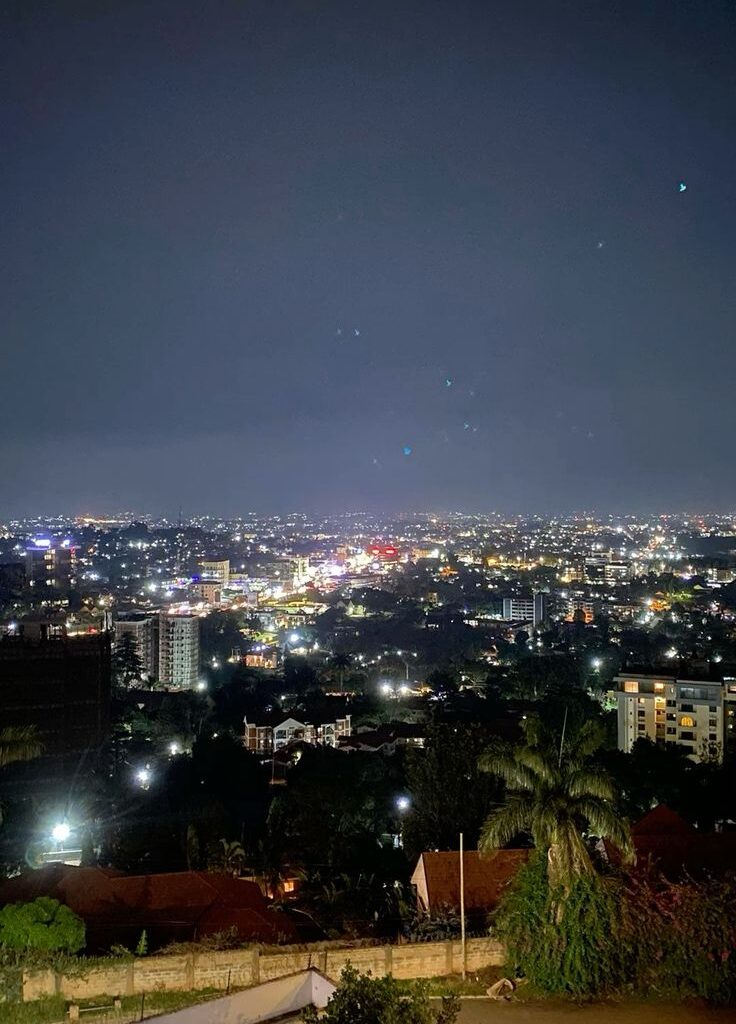
Brief History of Kampala
Kampala, now Uganda’s bustling capital, began as a small hilltop settlement in the late 19th century. The area was originally part of the Buganda Kingdom, ruled by Kabaka Mutesa I, who established his palace on Kasubi Hill.
The name Kampala comes from the phrase “Akasozi k’empala” — a Luganda expression meaning “the hill of impalas.” The area was once home to herds of graceful impalas that roamed freely around the royal hunting grounds.
When British colonial administrators arrived in the 1890s, they set up their administrative base on Old Kampala Hill, close to the Buganda royal seat. Over time, other hills such as Mengo, Nakasero, and Kololo developed into important residential and commercial centers.
From those humble beginnings, Kampala grew into a modern city of seven hills — and today it stands as Uganda’s political, cultural, and economic heart.
A picture of kampala in the early nineteenth century.
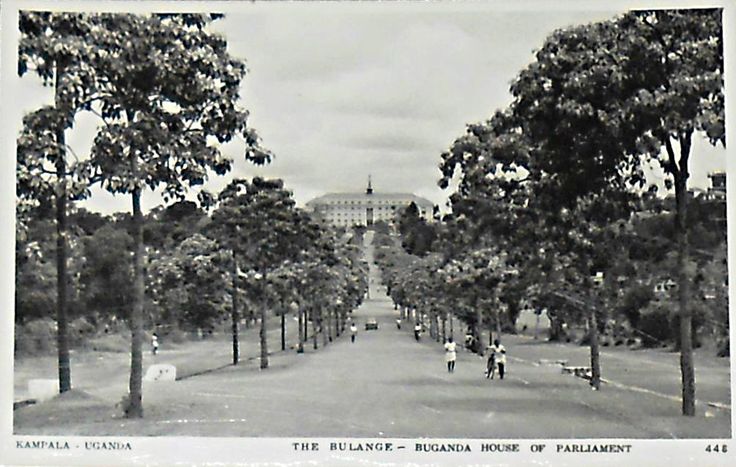
To be in particular the above picture is off a road known as kabaka anjagala road that connects the king of Buganda’s palace to his administrative offices of Bulange mengo in current day Lubaga division.
Cultural & historic significance
- The road has been called the “Royal Mile” of Buganda: a stately processional route between palace and parliament of the kingdom. The Observer+2Monitor+2
- It is a symbol of Buganda’s authority, heritage and identity. The alignment, trees and monuments along the road reinforce that. UCL Discovery+1
- In recent years the road has been enhanced with sculptural elements representing the 52 clans of Buganda. UACE+1
Recent developments
- The Kampala Capital City Authority (KCCA) has undertaken improvement works along the road (and the roundabout at the junction “Nantawetwa”) to restore its heritage value and beautify the stretch. Monitor+1
- The road is designated also as a tourism/heritage site given its historical meaning in Kampala’s cityscape.
Brief History of the Evolution of Kampala City
Kampala’s story begins in the 19th century as part of the Buganda Kingdom. The area was made up of several rolling hills covered with grass and wildlife, especially impalas, which inspired the name Kampala — from the Luganda phrase “Akasozi k’empala,” meaning “the hill of impalas.”
In the 1880s, Kabaka Mutesa I established his royal palace on Kasubi Hill, and soon after, British colonial officers set up their administrative base on Old Kampala Hill. This marked the beginning of Kampala’s transformation from a traditional royal settlement into a colonial administrative center.
During the colonial period (1890s–1962), Kampala expanded to seven major hills — Mengo, Nakasero, Kololo, Rubaga, Namirembe, Old Kampala, and Makerere — each developing a unique identity, from government offices to religious and educational institutions.
After Uganda gained independence in 1962, Kampala became the official capital and the heart of political and economic activity. Rapid population growth, urbanization, and modernization turned it into a vibrant metropolis blending traditional Buganda heritage with modern life.
Today, Kampala stands as Uganda’s largest city, a hub of culture, commerce, and creativity — where history, innovation, and everyday life coexist across its famous hills.
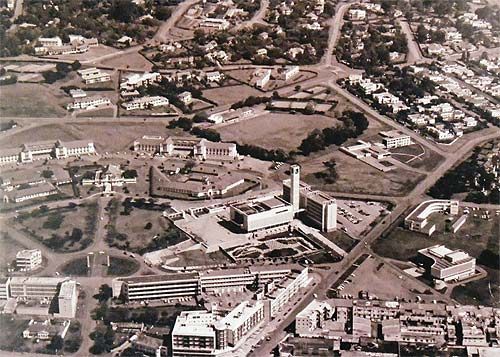
Administration in Kampala
Kampala is the capital city of Uganda and serves as the country’s administrative, political, and economic center. The city is managed under the Kampala Capital City Authority (KCCA), which was established by the Kampala Capital City Act of 2010.
The KCCA replaced the former Kampala City Council (KCC) and is responsible for city planning, infrastructure development, sanitation, traffic control, and public services. It operates under the oversight of the Minister for Kampala and Metropolitan Affairs, who represents the central government.
At the top of the city’s administration is the Executive Director, appointed by the President, who manages the day-to-day operations. The Lord Mayor, elected by city residents, represents the people’s voice and presides over the Kampala Capital City Authority Council.
Kampala is divided into five administrative divisions:
- Central Division – the commercial and business hub
- Nakawa Division – residential and industrial zone
- Makindye Division – a mix of business and leisure areas
- Rubaga Division – home to historical and religious sites
- Kawempe Division – a fast-growing residential and trading area
Together, these divisions make up the vibrant and dynamic city that continues to grow as Uganda’s.

Why You Shouldn’t Miss Nightlife in Kampala
When the sun sets over Kampala, the city comes alive with an energy like no other. Known as “The City That Never Sleeps,” Kampala offers an unforgettable nightlife experience that blends music, culture, and pure excitement.
From the lively bars in Kololo and Kabalagala to rooftop lounges in Nakasero and local hangouts in Makindye, there’s always a rhythm to follow. You can dance to Afrobeat, enjoy live band performances, or relax with a cold drink as the city lights sparkle below.
Kampala’s nightlife is more than entertainment — it’s a celebration of Uganda’s vibrant spirit and hospitality. It’s where locals and visitors connect, where laughter fills the air, and every night tells a new story.
Whether you love music, food, or just great company, Kampala at night is an experience you’ll never forget.

Best Hangouts in Kampala — Where Fun Meets the City’s Pulse
Kampala is a city that knows how to relax and have fun. Whether you’re after good music, great food, or a stunning sunset view, Uganda’s capital has a spot just for you.
Start your evening at Skyz Hotel in Naguru or Latitude 0° in Makindye for breathtaking rooftop views and a classy ambiance. For live music and authentic Ugandan vibes, Zone 7 in Mbuya and Silk Lounge in Kololo keep the crowd moving all night.
If you love a casual atmosphere, Café Javas and Endiro Coffee are perfect for laid-back chats or evening coffee. Party lovers can’t miss Bubbles O’Leary’s, The Alchemist, or Nexus Lounge, where Kampala’s nightlife truly comes alive.
For a touch of culture, enjoy local bands at National Theatre Gardens or craft markets at Ndere Cultural Centre.
No matter your mood — chill, romantic, or energetic — Kampala’s hangouts mix elegance, rhythm, and the warmth of Ugandan hospitality.
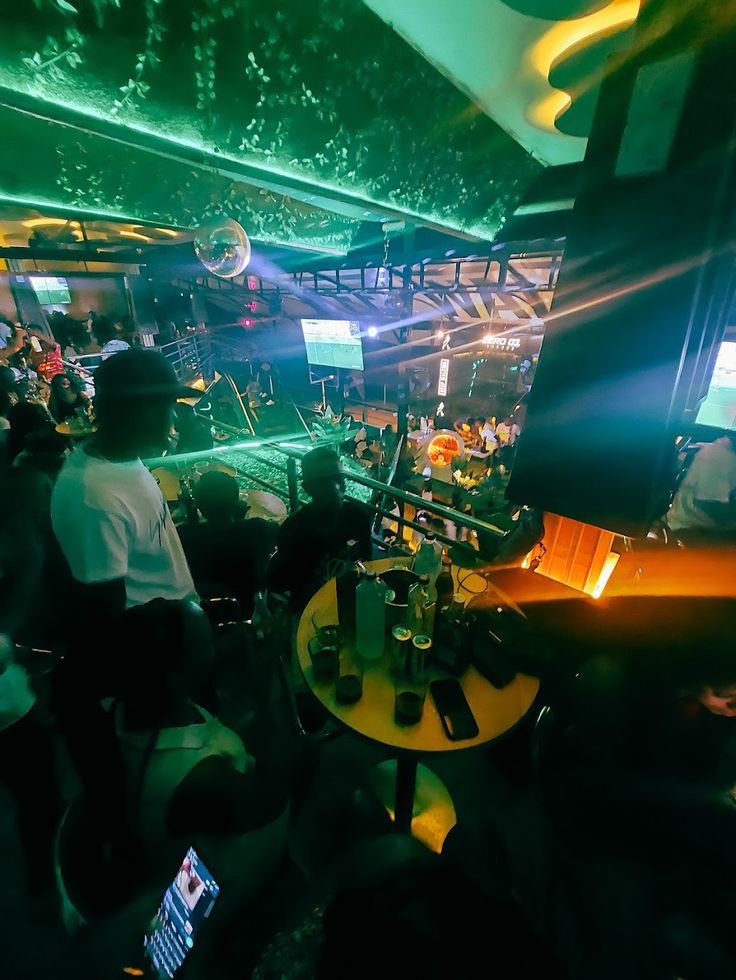
“Kampala’s nightlife is a vibrant mix of music, lights, and energy, and there’s no better way to enjoy it than with a cold Bell or Nile Beer. Bell Beer offers a crisp, refreshing taste that’s perfect for unwinding at rooftop bars or lively pubs, while Nile Beer brings a smooth, rich flavor ideal for dancing, socializing, or simply soaking in the city’s dynamic atmosphere. Cheers to unforgettable nights in Kampala!”
Why not visit kampala for tourism.
Kampala, Uganda’s bustling capital, is a vibrant hub of culture, history, and nightlife. Tourists can explore historic sites like Kasubi Tombs, Kabaka’s Palace, and Namirembe Cathedral, or enjoy the lively streets filled with markets, restaurants, and cafes. The city is also famous for its nightlife, with rooftop bars, live music venues, and clubs where Bell and Nile beers are popular companions. Nature lovers can visit Lake Victoria shores or nearby parks for a break from the urban energy. Kampala offers a perfect mix of history, culture, and modern entertainment, making it a must-visit destination in East Africa.
Kasubi royal tombs.
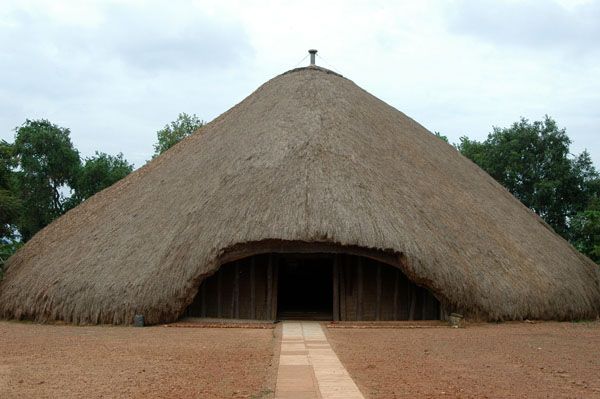
The Kasubi Royal Tombs in Kampala are a UNESCO World Heritage site and one of Uganda’s most significant cultural landmarks. Serving as the burial grounds for Buganda kings (Kabakas), the tombs offer visitors a glimpse into the rich traditions, history, and royal heritage of the Buganda Kingdom. With its striking traditional architecture and cultural significance, Kasubi Tombs are a must-visit for tourists seeking a deeper understanding of Uganda’s history and vibrant culture.

President Idi Amin torture chambers
A visit to Amin’s Torture Chambers, located in Kampala, offers a sobering glimpse into Uganda’s history under the brutal rule of Idi Amin. Once a site of imprisonment and torture, it now stands as a historical monument and museum, educating visitors about the country’s past struggles for freedom. Touring this site provides a deeper understanding of Uganda’s resilience, making it an important, reflective stop for culturally and historically-minded travelers.
Gaddafi mosque in old kampala.
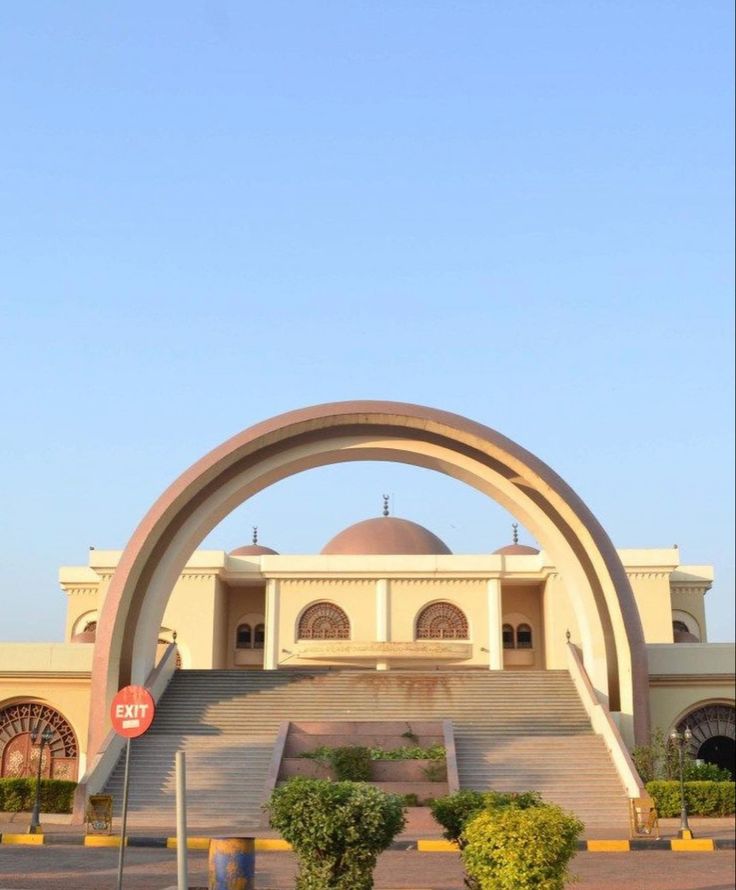
The Old Kampala Mosque, also known as the Uganda National Mosque, is one of Kampala’s iconic landmarks. Standing atop Old Kampala Hill, it offers visitors stunning panoramic views of the city and Lake Victoria. Beyond its architectural beauty, the mosque provides a window into Uganda’s Islamic heritage and vibrant community life. It’s a must-visit for tourists interested in culture, history, and photography while exploring Kampala.
Namugongo martyrs shrine.
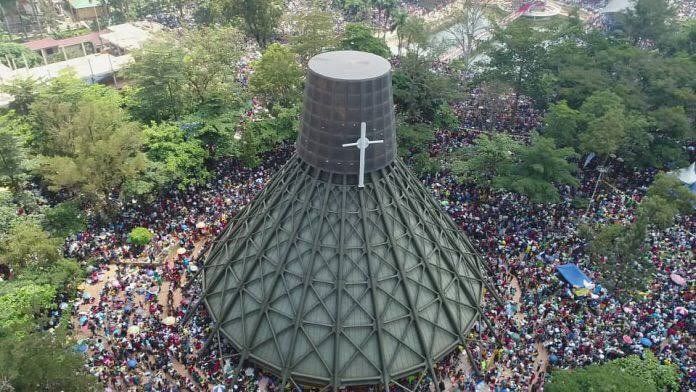
The Namugongo Shrine, located just outside Kampala, is a major pilgrimage site and a symbol of Uganda’s Christian heritage. It honors the Uganda Martyrs, 22 Catholic and 23 Anglican converts who were executed for their faith in the late 19th century. Tourists visiting the shrine can explore the beautifully maintained grounds, the impressive basilica, and learn about the inspiring stories of courage and devotion that shaped Uganda’s history.
Why not tour Kampala with Kagagyi falls gorilla tours.
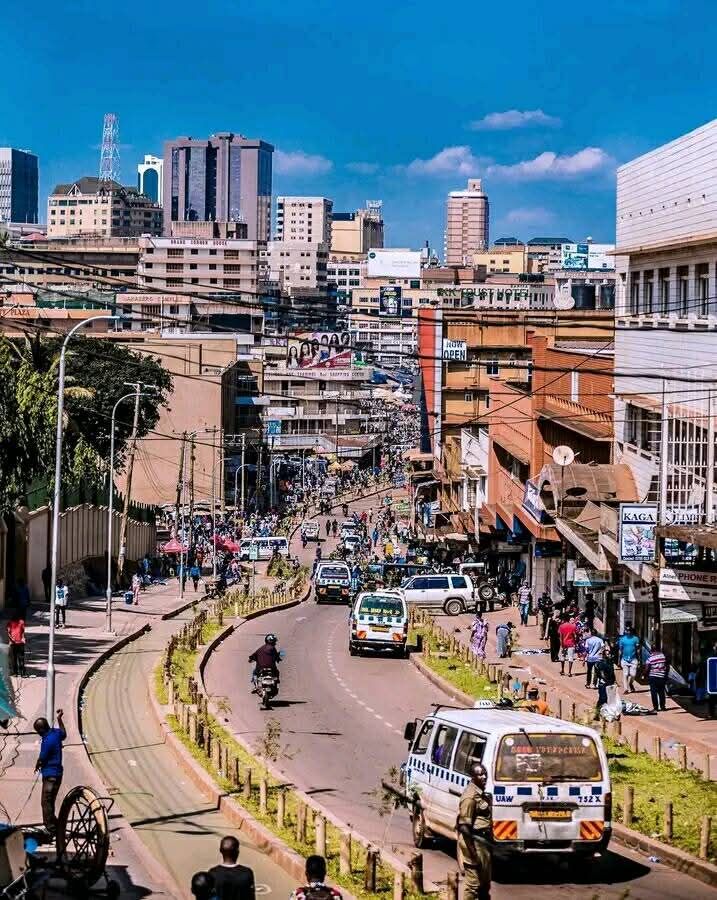
Kampala, Uganda’s bustling capital, is a city of vibrant culture, history, and nightlife, offering something for every traveler. From exploring the Kasubi Royal Tombs and Namugongo Shrine to enjoying panoramic views at the Old Kampala Mosque, the city is a rich cultural hub. With Kajagyi Falls Gorilla Tours, tourists can extend their adventure beyond the city, combining urban exploration with nature experiences. After a day of sightseeing and sampling local beers like Bell or Nile, you can unwind knowing your next adventure—gorilla trekking, wildlife safaris, and breathtaking waterfalls—is just a drive away.
